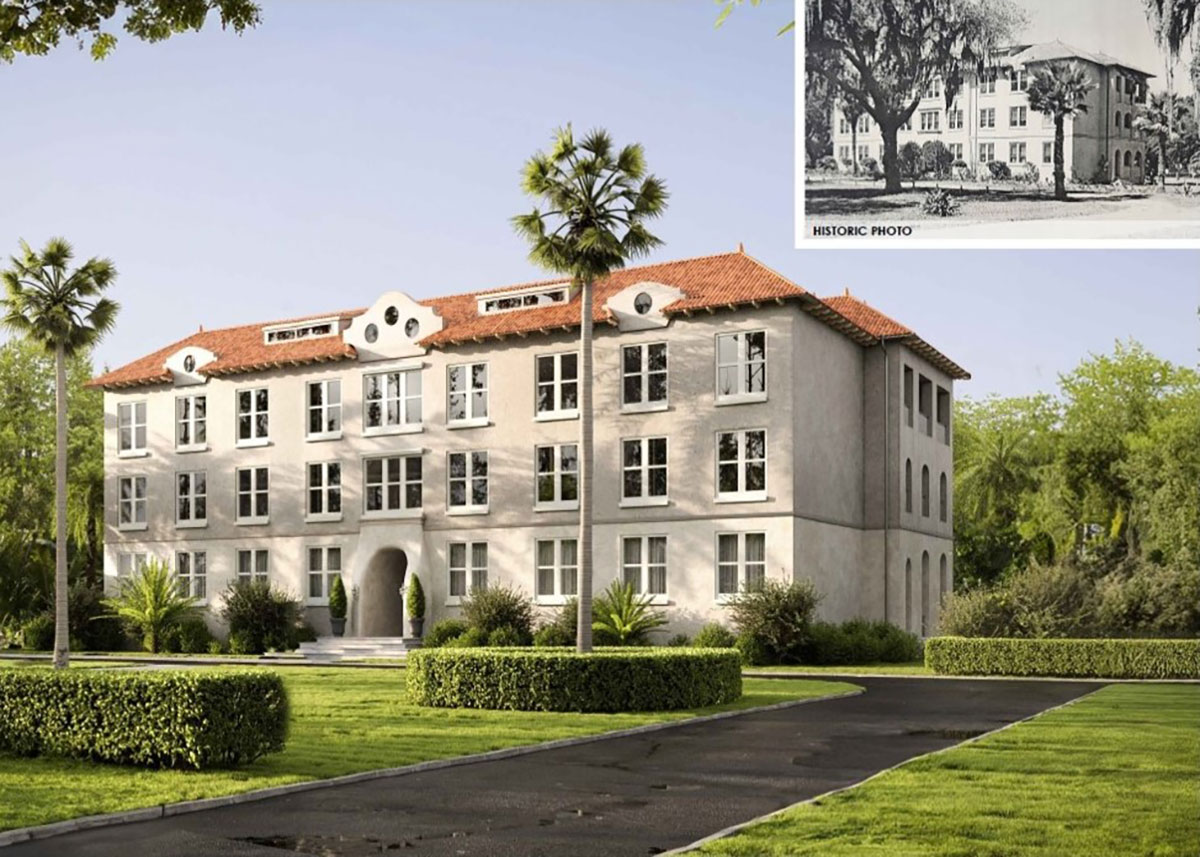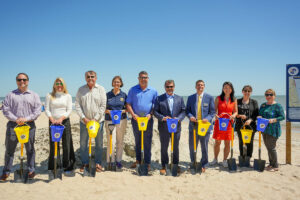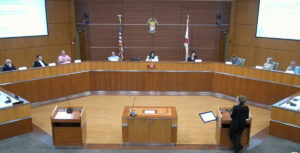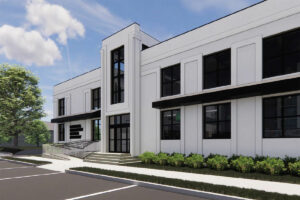St. Johns Tops Finalists for Florida Museum of Black History

It’s been a long and winding road for the Florida Museum of Black History Task Force to narrow the original list of 13 communities vying to house the museum to the final three. But the path for the contingent from St. Johns County proved even more treacherous after one of the vehicles got a flat tire and caught on fire on the trip to Tallahassee for the Task Force meeting April 19.
“We were literally going through fire to get here,” said St. Johns County Commission Chair Sarah Arnold during the county’s turn to answer questions from the Task Force. “Our bus caught fire this morning on the side of I-10.”
The harrowing trip was worth it, however, as St. Johns County was named one of the three finalists to be the location of the museum, along with Eatonville/Orange County and Opa-locka. According to the scoring system used by the Task Force, St. Johns was the highest ranked location.
The project to create a museum celebrating Florida’s Black history comes from a bill signed by Gov. Ron DeSantis in May of last year and includes the selection of a nine-member Task Force appointed by DeSantis, Senate President Kathleen Passidomo and House Speaker Paul Renner. The members include EVOLVE News publisher Howard Holley.
When informed the county was one of the four communities invited to attend the Task Force meeting in Tallahassee, St. Johns County commissioners approved a measure to secure land for the museum on the former site of Florida Memorial University.
According to a media release, commissioners approved a draft of a purchase and sale agreement with FMU to develop a campus-style museum, performing arts facility, cultural exhibits and more.
Task Force Chair State Sen. Geraldine Thompson began the meeting with a moment of silence in memory of former Florida Governor and Senator Bob Graham who passed away earlier this month.
“He gave 40 years of his life to community service,” Thompson said.
With a full agenda, the Task Force got down to business with a presentation from John Grandage, assistant director of the state Division of Historical Resources. He started with a recap of the Task Force’s mandate, which includes filing a final report with the legislature and governor with recommendations for the location, design and construction of the museum, recommendations for the operations and administration of the facility, a marketing plan for the museum, a transition plan for the museum to become financially self-sufficient, and recommendations for archival and artifact acquisition, along with research, exhibits and educational materials associated with the museum.
Before representatives from the four remaining communities under consideration to house the museum, Alissa Lotane, director of the Division of Historical Resources reviewed the Task Force’s progress and outlined the scoring process.
Lotane said after Task Force members asked questions, they would be able to change their initial scores and a revised final tally would be computed to narrow the list to three finalists.
“The reason we need to get to three after today is we have a contract with Florida A&M University to do further study on the top three locations,” she said. That study will be reviewed by the Task Force at their next meeting in May.
Task Force members asked the representatives a variety of questions ranging from funding and support, site issues, educational partnerships and other issues.
Asked about community support for the museum to be in St. Johns County, Arnold said the county has the backing throughout the Northeast Florida region.
“I can say the Board of Commissioners, the city of St. Augustine as well as the surrounding counties have all committed to helping us bring this home,” she said. “As of this morning we also have Nassau County. All committed to leveraging their funds, their resources to help us make this a regional approach because it is, in fact, a regional asset.”
Speaking for the Eatonville/Orange County bid, Terry Prather, chair of Visit Orlando, said the community is confident the financial issues are in hand.
“This is a project we know many charities across our region would be interested in investing in,” he said.
The representative from Opa-locka, Willie Logan, was asked about the connection to Black history in the community.
“We were known as the Harlem of the South,” said Logan, founder, president and CEO of Ten North Group that is working with the community on the museum project. “We were very much part of the Civil Rights Movement (and) our history is rich from the beginning of the 1600s and continues today.”
The Task Force also heard from Brenna Dacks, regional partnership manager with Visit Florida, about the state’s tourism development arm’s role in marketing and promoting the museum.
“We’re excited to see which location is chosen,” she said. “The Florida Museum of Black History will be a marketing partner.”
The Florida Museum of Black History Task Force meets again May 21 and is required to submit its final recommendations to the state by July 1.








